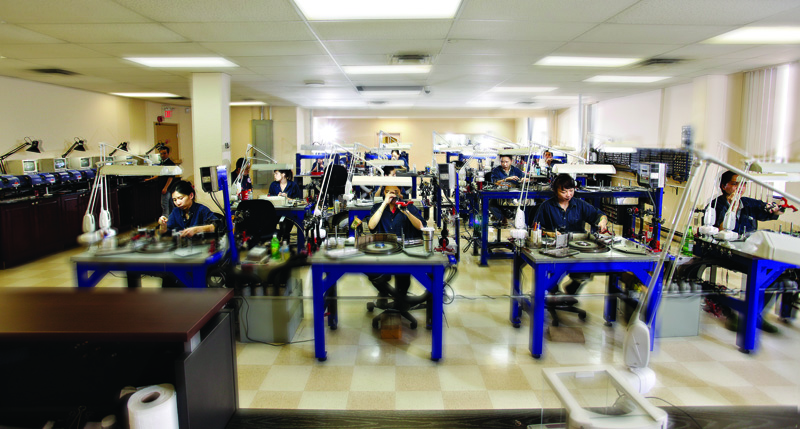Homegrown success: Canada’s triumphant diamond industry

Benefiting communities
Though not overtly recognizable, the diamond industry has proved beneficial to Canadians at large, and particularly the adjacent aboriginal communities which receive financial compensation from mining companies as well as sharing in the royalties, training, employment, and business opportunities available.
In the Northwest Territories, diamond mining has led to the creation of aboriginal businesses such as Tli Cho Landtran Transport Ltd. This Yellowknife-based business provides regular transportation services and is experienced with ice road travel—the lifeline for diamond mines in the Northwest Territories.
The diamond industry has generated thousands of jobs in Canada throughout the industry’s many segments such as exploration and mining, diamond cutting and polishing, and various support services involved in the building and operation of mines.
Further, the industry has enabled marketing strategies associated with branding diamonds as ‘mined, cut, and polished in Canada.’
Quality control
Early on, Canadian diamonds were sought after because they originated in exotic and beautiful Northern Canada, and were mined responsibly and sustainably. However, this eventually led to misrepresentation of generic diamonds in the global market as Canadian.
In 2002, under the leadership of the Competition Bureau of Canada, the Canadian diamond industry came together to establish the Voluntary Code of Conduct for the Authentication of Canadian Claims (The Code). The Code, which is managed by the Canadian Diamond Code Committee (CDCC), sets the standard for authenticating Canadian diamond claims based on records and transparency. The CDCC can trace a Canadian diamond to its mine of origin if it meets the minimum standard.
Further, in 2009, the Ontario government supported the establishment of a Toronto-based diamond bourse, a secure trading facility allowing accredited members to benefit from the use of other diamond bourses across the world through membership in the World Diamond Bourse Association.
Canada is also an active participant in the Kimberley Process (KP) which regulates the world’s trade of rough diamonds in order to prevent the sale of illicit diamonds which otherwise would support rebel groups and criminal activity such as money laundering.
The road ahead
Significant strides have been made to secure industry growth. Today, diamond exploration is very active in Canada with a number of projects showing potential. These include the Peregrine Diamonds Ltd. Chidliak project on Nunavut’s Baffin Island and the Shore Gold Inc. Star and Orion projects in Saskatchewan which contain millions of tonnes of kimberlite material, the host rock of diamonds. As many as 20 companies are listed on the TSX Venture Exchange in search of another world-class project.
Diamond mining in the Northwest Territories was an important factor in the decision to build a bridge over the Mackenzie River. The Renard project made it possible to extend Route 167 from Temiscamie, an all-weather road to the mine. This new road aims to expand opportunities in line with the Québec government’s Plan Nord which aims to maximize the natural resource’s potential of northern Québec.
Altogether, the industry has contributed significantly to the coffers of all levels of government. Approximately 40 per cent of diamond mining operations will be collected in royalties, direct and indirect taxes, and levies which could be reinvested in Canadians.
Like Canada, with on-going diamond production and exploration suggesting new projects, the industry has a sparkling future.
Pierre Leblanc is the president of Canadian Diamond Consultants Inc. He is a former vice-president of corporate affairs at Diavik Diamond Mines Inc. He is a founding director of the Voluntary Code of Conduct for Authenticating Canadian Diamond Claims, and has been involved in the Canadian diamond industry since September 2000 where he has promoted the Canadian diamond industry in Canada and abroad. Leblanc can be reached via e-mail at canadiandiamondconsultants@bell.net.


